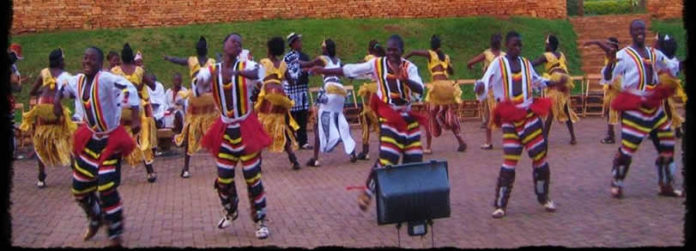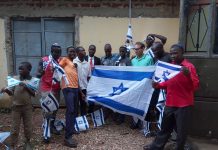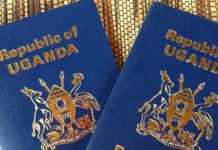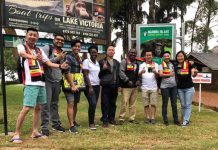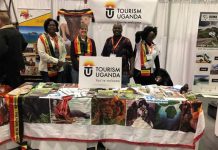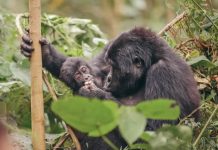Uganda is a home to many tribes that speak different languages. Uganda has 56 tribes and about nine indigenous communities that formally came to be recognized in the 1995 constitution amendment of 2005. English is the official language of Uganda. Luganda and Swahili also widely spoken in most parts of the country. With the increasing Asian population, most Asian languages are spoken, there is also French, Arabic and Germany mainly in institutions where they are taught and at embassies. The following were the indigenous communities in Uganda as at 1st February, 1926 and how they appear in the 1995 constitution:
1. Acholi
2. Alur
3. Baamba
4. Babukusu
5. Babwisi
6. Bafumbira
7. Baganda
8. Bagisu
9. Bagungu
10. Bagwe
11. Bagwere
12. Bahehe
13. Bahororo
14. Bakenyi
15. Bakiga
16. Bakonzo
17. Banyabindi
18. Banyankore
19. Banyara
20. Banyarwanda
21. Banyole
22. Banyoro
23. Baruli
24. Basamia
25. Basoga
26. Basongora
27. Batagwenda
28. Batoro
29. Batuku
30. Batwa
31. Chope
32. Dodoth
33. Ethur
34. Ik (Teuso)
35. Iteso
36. Jie
37. Jonam
38. Jopadhola
39. Kakwa
40. Karimojong
41. Kebu (Okebu)
42. Kuku
43. Kumam
44. Langi
45. Lendu
46. Lugbara
47. Madi
48. Mening
49. Mvuba
50. Napore
51. Nubi
52. Nyangia
53. Pokot
54. Sabiny
55. So (Tepeth)
56. Vonoma
The Constitution (amendment) Act 2005 added Aliba, Aringa, Banyabutumbi, Banyaruguru, Barundi, Gimara, Ngikutio, Reli and Shana as indigenous communities of Uganda.
The Ik Culture – Beehives for Bride Price
The Ik is an endangered ethnic group in Africa believed to have originated from the Nile delta region during the decline of the Egyptian empire. Today there are about 11.217(Population survey 2011) Ik people living next to Kalimajong and Turkana people in the north eastern Uganda Mountains near the Kenyan boarder. The Ik people are substance farmers whose language belongs to the highly divergent Kuliak sub-group of Nilo-Saharan languages. They kept cattle and they were regularly raided by its neighbors. Due to constant raids, Ik left cattle keeping with the idea of staying in peace with the surrounding communities.
They stay in some twenty small villages along the escarpment between Timu forest in the north and Kidepo valley national park. Surrounded by outer walls, Ik are divided into small families “neighborhoods”. The main activity of the Ik people were hunting and gathering fruits not until 1960s when their land was declared a national park. They went to the mountains and started cultivation, hunting and beekeeping. Ik are said to have been the first people to migrate to the north eastern part of Uganda and they say that the word Ik means “the first one to migrate”. Children are expelled from households at the age of three to form their own groups and to have their own resources like food however this is done in order to survive as they were struck by two strong droughts that caused severe famine and other epidemics. These groups are formed to protect themselves from older children who would take their food.
This cultural heritage is very rich and waiting to be explored so spending a day with the Ik people together with its magnificent scenery of Morungole Mountain Kaabong district is simply dazzling. Surprisingly, the Ik people pay 5 to 10 bee hives as bride price instead of cattle. Other cultural habits like marriage and everyday life of these people are really resourceful. Depending on the number of beehives a man can marry as many wives as he wants. A respectable man owns as many as 50 beehives. Their honey is thick and natural and five liters cost around 20.000/=. The first wife is the most respected among other wives and inheritance is done after divorce.
The access to this place was not easy at all but thanks to US forest service that marked a trail to the Ik villages that has made access much easier however you have to be physically fit due to the ragged nature of mount Murongole which is at 2,749metres above the sea level. Ik are not all that educated apart from one lady at Kampala University who is to be the first graduate of the Ik. Apart from education, Tourism adds a little more income and value to the Ik community.
Hiking up to the Ik villages would be one of the supreme opportunities and experience that is very interesting and a great opportunity if added to your Uganda tour itinerary. As you are guided within the Ik villages, ask these people questions about their lifestyle, leadership and how they raise their children.
Enjoy their way of living, discover from them and you can as well enjoy their local beer with them to experience the flavor. This is a one-day Uganda safari trip that requires advance preparation and incorporation into the safari itinerary such that you can have a separate day off your Kidepo trip to visit the marginalized and endangered people.

